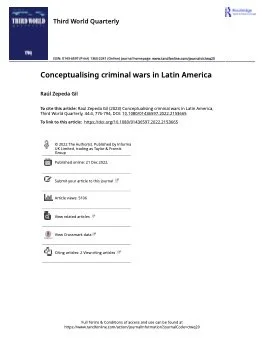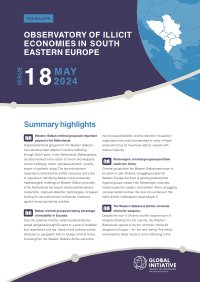By Raúl Zepeda Gil
Violence rising in Latin America since the early 1990s has puzzled media, policymakers and academia. Characterising high scales of violence in non-political confrontations has been one of the main challenges. The main argument of this essay is that the hybrid criminal nature of violence in Latin America by non-state organisations has pushed the discussion to several misinterpretations and conceptual stretching that produces fog rather than clarity. Instead, this essay proposes a conceptof criminal war that can capture the complex nature of violence in Latin America by drawing convergences and divergences from diverse fields of literature and confronting usual mischaracterisations in current Latin American research.
Third World QuarTerly2023, Vol. 44, No. 4, 776–794






